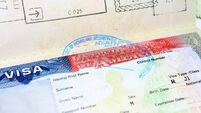Exporters to lose as dollar hits record low
The dollar fell to a new low against the euro for a third consecutive day yesterday and hit multi-year lows versus all other major currencies, as across the board dollar selling gathered momentum. The fall looks certain to continue without the intervention of the European Central Bank and/or the Bank of Japan.
The dollar fell to a new low $1.3236 to the euro and Deutsche Bank expects the dollar to weaken to $1.43 and to 93 yen by the end of 2005, from previous forecasts of $1.37 and 99 respectively. JP Morgan put a target of $1.35 against the euro by year’s end.
Warnings from Japanese and European policymakers did little to halt the greenback’s slide, which has been driven primarily by concerns over the US current account deficit and the market’s belief Washington is happy with a weaker dollar.
The dollar’s decline will continue amid waning investor appetite to fund the US current-account deficit, said Greek Deputy Finance Minister Petros Doukas.
The US and European governments should come up with a joint plan to stem the currency’s slide and limit the effects of a weakening dollar on European exports, Minister Doukas said in an interview in Brussels.
Major exporters to the US such as Waterford Wedgwood, CRH, Kerry Group and Glanbia will be hit by the fall in the value of the euro versus the dollar making exports dearer and hitting repatriated profits.
US multi-nationals based in Ireland will benefit from the increase in the value of the dollar as sales in euro and repatriated profits will be worth more. However, Ireland’s competitiveness will be reduced in pure dollar value terms when it comes to foreign direct investment and competing manufacturing locations. But as the dollar falls against a basket of currencies this will have less of an impact.
Exporters will also face increased competition from US manufactures as the price of their products fall in line with the dollar on international markets.
Additional reporting Reuters and Bloomberg.
















